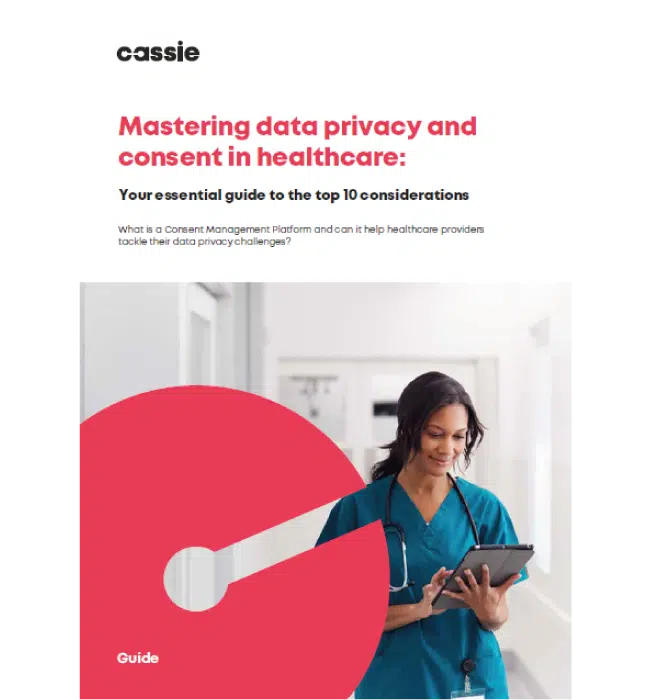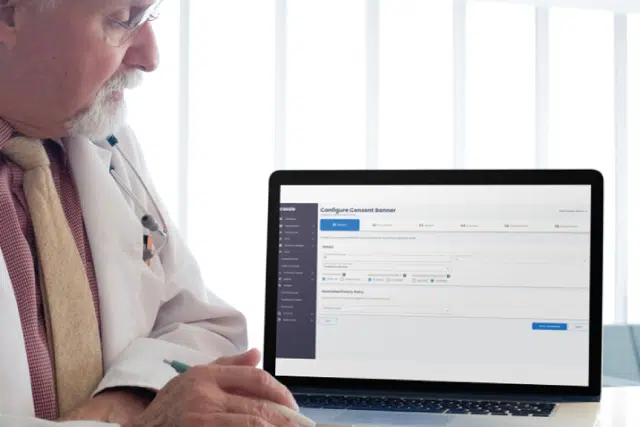How to tackle the complexities of health data consent management
Posted: May 30, 2023
Consent management involves obtaining, documenting, and managing consent from individuals for the collection, use, and disclosure of their sensitive health information.
It plays a crucial role in compliance with data protection legal standards. It also allows customers to make informed choices about their data and exercise greater control over their protected health information (PHI).
The health data industry requires robust consent management in place to deal with the development and adoption of new health technologies, cross-border data flows, insights and innovation in the health sector, as well as user engagement with apps and websites.
Factors that amplify complexity
If the road to compliance is tough, managing consent is a major driver. Consent management is complicated for a number of reasons, including different types of data being collected from a variety of sources, managing auditing and reporting trails, accessibility and transparency, etc.
- The data types being collected
In environments with large volumes of health data, ensuring the integrity and reliability of consent records, implementing audit trails, and providing mechanisms for auditing and reporting can be challenging. Additionally, different data forms, including electronic health records (EHRs), medical imaging, genomics, and wearables, have specific characteristics and requirements for consent management. For example, clinical data is more sensitive than demographic data, and therefore, clinical data is subject to HIPAA regulations while demographic data is not.
- Purposes for data collection
The use of different data types for different purposes impedes consent management, as it is difficult to obtain consent for all possible use cases. First, patients may not be aware of all possible use cases. Second, the requirement for consent to be exclusive requires organizations to obtain consent for different purposes for different types of data. For example, patients may consent to the use of their data for research but not for marketing.
- Governing laws and regulations
Governing laws and regulations vary from country to country and from state to state within a nation, such as the U.S. Sometimes sectoral laws’ specific definitions and provisions for health data may conflict with the scope and broad definitions of omnibus data privacy laws applicable to all personal data types. Also, some regulations may mandate explicit or opt-in consent, while others may allow for implied or opt-out consent.
- Patients’ preferences and expectations
Patients’ expectations for making informed decisions in relation to their health data require transparency and clarity in consent management. Healthcare organizations should accommodate the varying preferences of patients and consider the context in which data is being collected and shared. For example, patients willing to share data within a healthcare provider’s network may refuse to share it with third parties.
Complexities of consent management with health data
- Multiple stakeholders
Distributed ownership without appropriate data sharing agreements in place impedes establishing a unified consent management framework. Different stakeholders (researchers, third-party service providers, insurers, etc.) access and use health data as per their roles, responsibilities, and purposes. They may be subject to various sector-specific regulations and have different requirements for obtaining and managing consent. Sharing health data across multiple stakeholders with varying awareness regarding consent requirements can disrupt seamless interoperability and lead to inconsistencies or potential breaches of privacy.
- Granularity of consent
While granularity can enhance individual control and autonomy over their health data, healthcare organizations managing and updating a large number of individual consent choices can suffer from a lack of sophisticated consent management infrastructure in place. Granular consent may involve establishing relationships between different data elements or purposes, where the consent for one element may depend on the consent for another. Hierarchical relationships require determining which consent choices take precedence over others when conflicts arise. For instance, an individual’s revocation of consent for a specific purpose may have implications for general data sharing consent.
Steps to tackle the consent management hassles
Consent management can be challenging, but it can be made easier by understanding a few key points. To swiftly tackle the complexities of consent management, especially with health data, carry out the following methods:
- Obtain informed consent
Informed consent helps patients or research participants provide their consent for a medical procedure or research study by weighing the benefits and risks involved. A privacy notice and privacy policy should contain plain and simple language without the use of jargon or technical terms to ensure that individuals understand clearly the purpose, scope, and implications of data collection, use, and disclosure.
- Granular consent choices
Consent management mechanisms should be designed with an emphasis on clearly defining different data categories, articulating the purposes for which data will be used, letting patients choose the level of sharing they are comfortable with, limiting the time and scope of consent, using an opt-in approach for sensitive data categories, and providing users with an intuitive interface for easily selecting their preferences.
- Establish a consent governance framework
A consent governance framework encompasses the following key elements:
Policy development refers to creating a set of guidelines that govern how an organization, in compliance with applicable data privacy laws and regulations, collects, documents, stores, shares, revokes, or handles consent-related complaints or inquiries. It involves identifying applicable laws and regulations (sectoral, state, or federal), defining key terms related to consent management (like personal data, processing, consent, and revocation), outlining procedures for obtaining, recording, and managing consent, as well as establishing security measures (such as encryption, access controls, risk assessments, etc.) to ensure confidentiality of health data.
Clearly defining roles and responsibilities for individuals involved in the consent management process ensures accountability and clarity. Various roles (and their responsibilities) include data protection officer (overseeing the organization’s data protection and privacy practices), legal and compliance team (interpreting and applying relevant privacy laws and regulations), privacy team (implementing and managing the organization’s privacy program), IT and security team (implementing technical and organizational measures to protect PHI), medical healthcare professionals and researchers (obtaining informed consent from participants), etc.
Additionally, organizations should effectively document consent, conduct privacy impact assessments, implement consent and preference management software tools to monitor and audit consent management processes, train employees on data protection practices, and establish processes for continuous improvement of consent management practices.
What is Cassie and how does it help healthcare providers strengthen patient trust?
Cassie is the Consent and Preference Management platform for organizations processing complex and high volumes of data; they rely on Cassie to build stronger patient relationships through the respect of individual choices.
Our advanced preference management system allows the auditable capture of important patient choices around how organizations store, share and use the data they provide. Cassie can apply patients’ preferences across your communications channels in micro-seconds for near real-time enforcement.
Cassie offers a viable solution for healthcare providers to comply with the stringent regulations laid out by HIPAA, ensuring the safe and confidential handling of all patient data.
- Achieve comprehensive compliance with HIPAA regulations
- Securely store patients’ personal data
- Create a detailed audit trail for all access permissions and modifications
- Offer a convenient method for securely tracking, managing, and sharing sensitive data
- Enhance the understanding of how patient data is utilized and ensure its appropriate use.
To discover how Cassie can assist healthcare providers in surpassing their compliance goals and achieving advanced levels of connected care, take a look at our healthcare sector case study.

Want to learn more about the evolution of data privacy in healthcare?
Read our Mastering data privacy and consent in healthcare guide to understand the importance of managing patient data correctly. In this guide, you will learn:
- How to maintain patient trust
- How to ensure data protection
- The challenges the healthcare sector faces around data privacy
- How Consent Management Platforms can help healthcare providers achieve their goals

